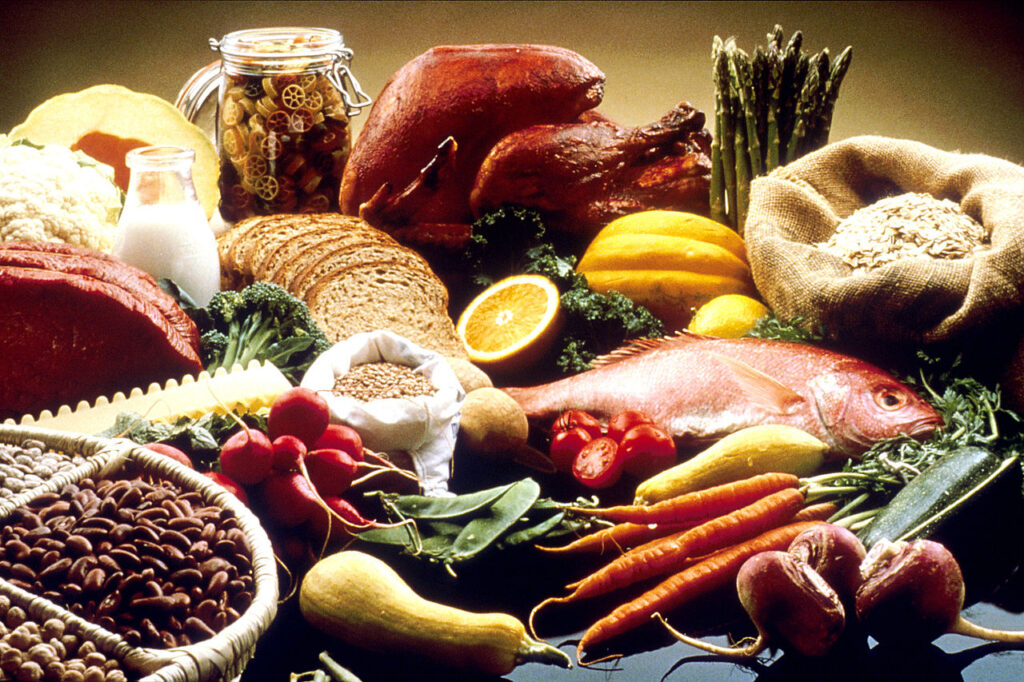Are you tired of that “skinny fat” look, where you appear thin but struggle with excess body fat, especially belly fat?
This is a common issue among many of my clients, and
In this comprehensive guide, we’ll dive deep into the skinny fat phenomenon and provide you with a tailored “skinny fat workout” and diet plan to help you transform your body and achieve a healthier, more toned appearance.
Key Takeaways
Understand the “skinny fat” phenomenon & its associated health risks
Create a balanced routine of resistance training and cardio to build muscle & burn fat
Track progress, adjust diet/exercise plan for optimal results in transforming your body
Understanding the Skinny Fat Phenomenon
The term “skinny fat” refers to individuals, like a skinny fat guy or a skinny fat woman, who may appear slim but have a higher body fat percentage and low muscle mass. This body type can be deceptive since it hides the health risks associated with excess body fat. Being skinny fat not only affects the appearance of skinny fat people but can also lead to health issues such as diabetes, heart disease, and hormonal imbalances.
Identifying a Skinny Fat Body Type

How can you tell if you have a skinny fat body type? Common traits include low muscle tone and extra body fat in certain areas like the midsection, hips, and thighs. This higher body fat percentage compared to lean muscle mass can lead to a “skinny fat stomach” appearance, even in individuals with a normal body weight according to the body mass index.
The Health Risks Associated with Being Skinny Fat
Don’t let the slim appearance fool you; being skinny fat can pose serious health risks. Increased body fat, especially visceral fat around the organs, has been linked to:
diabetes
heart disease
high blood pressure
vitamin deficiencies
Additionally, hormonal imbalances and certain medications can contribute to the development of a skinny fat body type.
Given these potential health risks, addressing and overcoming the skinny fat phenomenon becomes paramount.
Causes of Being Skinny Fat

So, what causes someone to become skinny fat?
Genetics, diet, exercise habits, and activity levels all play a role in developing this body type.
Genetic Factors
Your genes can limit muscle growth, making it more likely for you to have a skinny fat body type. However, keep in mind that even though genetics may play a role in predisposing you to a skinny fat body type, a proper diet and exercise regime can help you overcome these challenges and achieve a healthier, more toned look.
Diet and Nutrition
Poor dietary choices can contribute to the development of a skinny fat body type. Consuming excessive amounts of processed foods, sugar, and unhealthy fats can lead to weight gain and increased body fat.
Focusing on nutrient-dense foods and cutting down on processed and unhealthy options will aid muscle growth, reduce body fat, and combat the skinny fat appearance.
Exercise Habits and Activity Levels
A lack of resistance training and an overemphasis on cardio can lead to a skinny fat body type. Resistance training is crucial for building muscle mass, while cardiovascular exercises help with fat loss.
Creating a balanced workout routine that combines resistance training and cardiovascular exercise is key to achieving the best results in combating a skinny fat body type.
The Essential Skinny Fat Workout Plan

Now that we understand the causes of being skinny fat, it’s time to talk about the workout plan.
A comprehensive skinny fat workout plan should prioritize resistance training for muscle growth, cardiovascular exercise for fat loss, and balance both types of workouts for optimal results.
Resistance Training for Muscle Growth
Incorporating weight training and resistance training into your workout routine is essential for building muscle mass and improving body composition.
Some great compound lifts to target multiple muscle groups and stimulate muscle growth include:
Squats
Deadlifts
Bench press
Pull-ups
Aim to include these compound exercises in your resistance training program for an effective strategy to combat the skinny fat appearance and build a lean, toned physique.
Cardiovascular Exercise for Fat Loss
While resistance training is critical for muscle growth, cardiovascular exercise plays a significant role in promoting fat loss.
To incorporate cardio effectively into your workout plan without sacrificing muscle growth, consider adding 20-30 minute cardio sessions like running or swimming a few times a week or 1-2 High Intensity Interval Training (HIIT) cardio sessions for 10-15 minutes each week.
Balancing Workouts for Optimal Results

Crafting a balanced workout routine is key to achieving the best results in combating a skinny fat body type. Aim to perform resistance training 3-4 days a week and include cardio 2-3 days a week.
Regular assessments of your progress and necessary adjustments to your routine and diet will ensure continued success in your transformation journey from skinny fat to fit.
Tailoring Your Diet for Skinny Fat Success

In addition to a well-balanced workout plan, proper nutrition is vital for success in combating a skinny fat body type.
Adjusting your diet to support your workout plan involves focusing on macronutrient balance, calorie management, and food choices for optimal nutrition.
Emphasizing protein, carbohydrates, and healthy fats will help fuel your workouts and support muscle growth while minimizing fat gain, ultimately leading to muscle gain.
Macronutrient Balance
For individuals with a skinny fat body type, the ideal macronutrient ratio should be around 25% protein, 55% carbs, and 20% fat. You can play around with the exact ratios to find what works for you, but try to prioritize protein intake to support muscle growth and recovery, and maintain a balance of carbohydrates and healthy fats for energy and overall health.
Aim for a daily total of about 1 gram of protein per pound of body weight. So, if you weigh 160 pounds, that’s about 160 grams of protein throughout the day.
Remember, a balanced skinny fat diet with nutrient-rich foods is key to transforming your body, helping you lose weight, and achieving success in your skinny fat journey. Incorporating a healthy lifestyle and losing weight go hand in hand when it comes to overcoming the skinny fat dilemma.
Calorie Management
Proper management of calorie intake is key to supporting muscle growth and fat loss. Depending on your goals, you may need to create a calorie deficit to lose fat or a calorie surplus to build muscle. Monitoring your calorie intake and making adjustments based on your progress will help you achieve your desired results while minimizing the risk of fat gain.
Food Choices for Optimal Nutrition
Opting for nutrient-dense foods and reducing processed and unhealthy options is vital to your success in overcoming the skinny fat phenomenon. Focus on:
Lean proteins
Healthy fats
Fruits
Vegetables
Whole grains
These whole foods will provide your body with the nutrients it needs to support muscle growth, fat loss, and overall health.
Tracking Progress and Adjusting Your Plan

As you strive to transform your body, tracking your progress and making adjustments to your workout and diet plan as needed becomes crucial. Regularly assessing your body composition, workout performance, and dietary habits will help you stay on track and ensure continued success in combating a skinny fat body type.
Measuring Body Composition
Accurately measuring body composition is essential for tracking your progress and making informed decisions about your workout and diet plan. Methods such as skinfold calipers, DEXA scans, or whole-body CT/MRI scans can provide precise measurements of your body fat percentage and lean mass.
These methods can be expensive and/or a hassle to do, so a pretty good alternative is to use the Navy Seals Calculation Method to calculate your body fat percentage. All you need are a few body measurements (your weight, neck size, and belly size). It’s not as accurate, but when measuring progress, consistency is more important than accuracy. In other words, if you pick one method, stick to that method for the entire workout plan when you measure your progress.
Keeping a close eye on your body composition will help you stay on course and make necessary tweaks to your plan.
Assessing Workout Performance
Evaluating your workout performance is crucial for ensuring progress and making necessary adjustments to your routine. Here are some key performance indicators to monitor:
Strength and endurance improvements
Progress photos
Measurements
Energy levels
Use these indicators to gauge your progress.
Frequent assessments will guide you in tweaking your workout and nutrition plan, assuring continued success in your transformation from skinny fat to fit. Don’t forget to also measure body fat percentage, as mentioned above.
Adapting Your Plan for Continued Success
As you advance in your journey to overcome the skinny fat phenomenon, adapting your workout and diet plan based on your results becomes indispensable. Regularly assess your body composition, workout performance, and dietary habits, making necessary adjustments to ensure continued success.
Remember, the key to transforming your body and achieving long-term success is consistency and commitment to your tailored workout and nutrition plan.
Summary
In conclusion, overcoming the skinny fat body type is achievable with a tailored workout plan, proper nutrition, and commitment to tracking progress and making adjustments. By prioritizing resistance training, managing calorie intake, and choosing nutrient-dense foods, you can transform your body and achieve a healthier, more toned appearance.
Consistency is key, and with dedication and persistence, you can successfully combat the skinny fat phenomenon and enjoy a fitter, healthier life.
Frequently Asked Questions
Which workout is best for skinny fat?
If you’re looking to get in shape and build muscle, doing at least 3 workouts per week that focus on the big compound lifts is a great place to start. Include some moderate intensity cardio too – 20-30 minutes should do the trick.
How do I go from skinny fat to toned?
To get toned from a skinny fat physique, focus on building muscle mass with compound exercises such as squats, deadlifts and chest presses. Increase your strength through traditional resistance training, 3-4 times a week, and don’t forget to eat enough protein for optimal results. Heavy, compound weightlifting is your best bet for fixing the skinny fat problem.
How many days should skinny fat workout?
For best results, skinny fat people should stick to a workout routine no more than three or four days per week.
How important is diet in combating the skinny fat phenomenon?
Diet is key to combatting the skinny fat phenomenon – it’s important to focus on macronutrient balance, calorie management, and nutrient-dense food choices.
How often should I assess my workout performance and progress?
Assess your workout performance and progress every 4-6 weeks to stay on track and make sure you’re getting the results you want. You can track progress using body fat percentage measurements, body photos, and/or bodyweight measurements. However, the best way to keep track is through body fat percentage.


Recent Comments